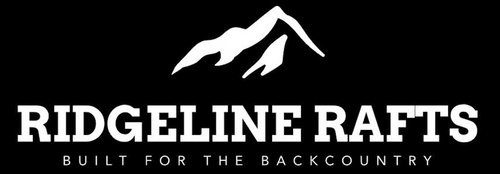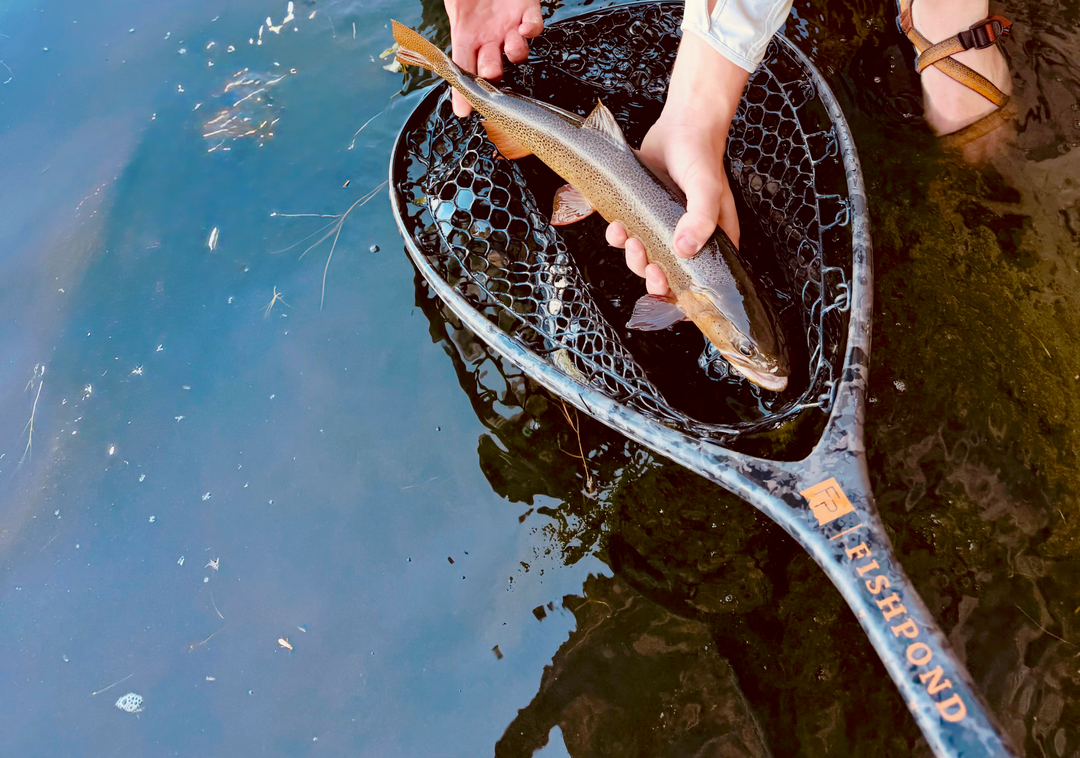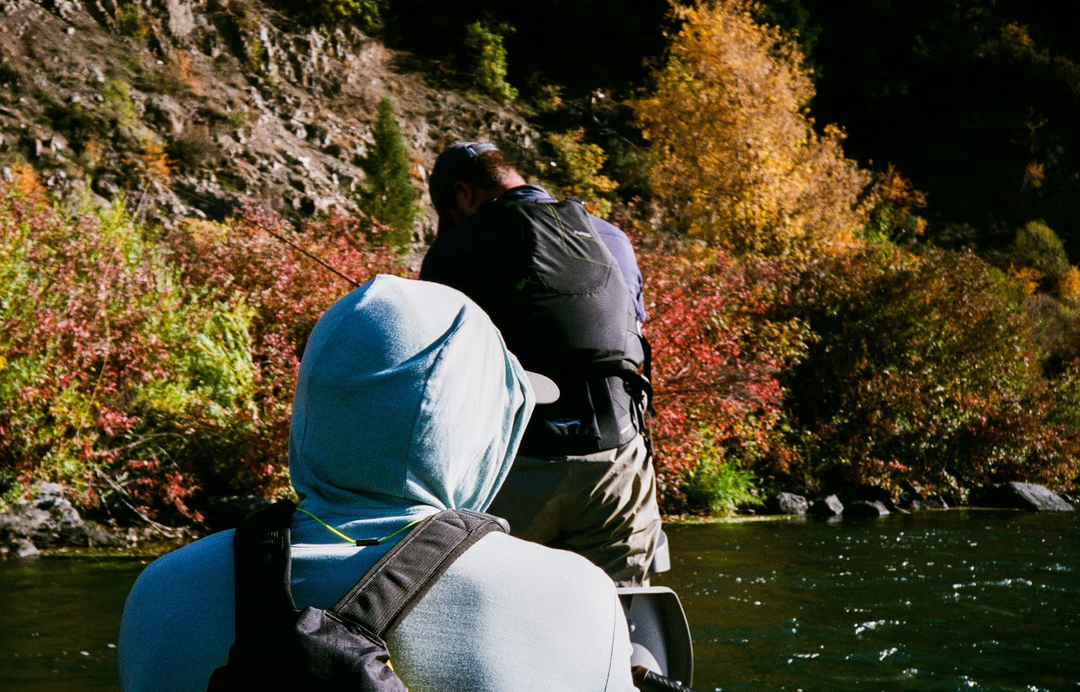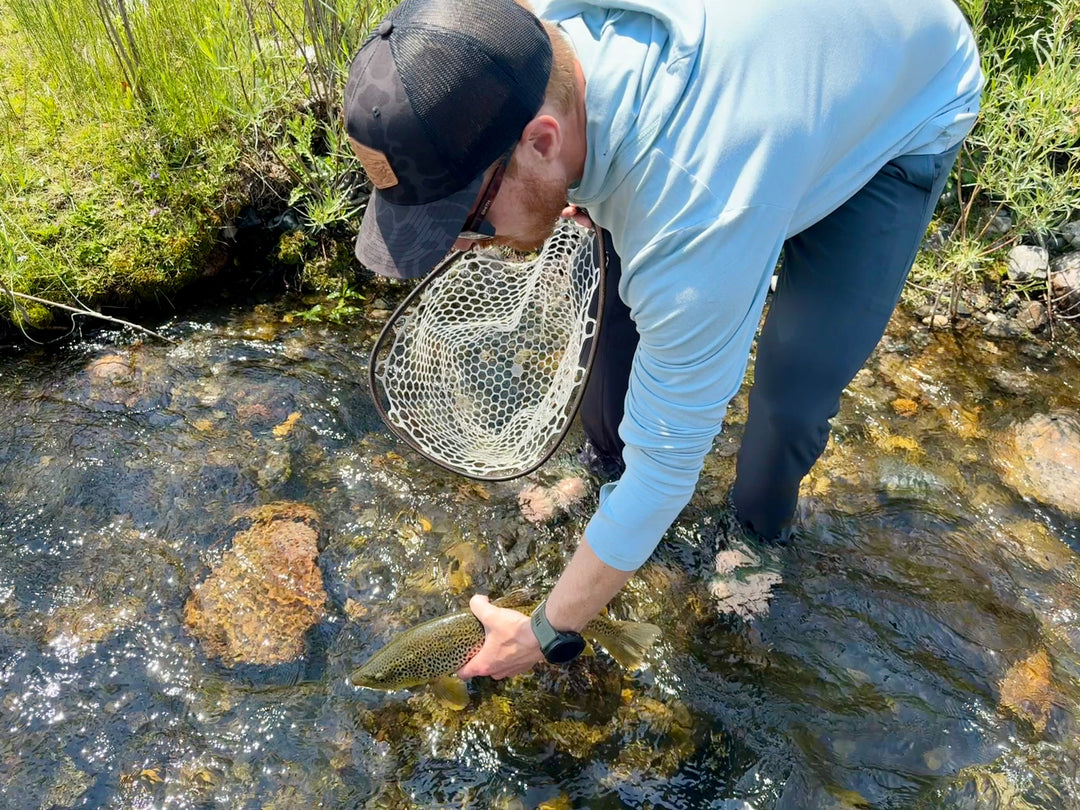Self-Bailing Rafts - A Complete Guide

What is a Self-Bailing Raft?
If you’ve ever been on a guided float trip on a whitewater raft , you’ve likely heard someone talk about a “self-bailing raft.” But how is it different from other types of inflatable rafts like bucket boats? And are they even an option for a fly fishing boat? Whether you’re navigating technical rapids, planning a family float, or trying to keep your gear dry on a long multi-day fishing adventure, understanding the differences between self bailing rafts and non bailing rafts is essential in your search for an inflatable raft.
A self-bailing raft is a type of inflatable boat designed to automatically drain excess water that enters the raft. When water enters the boat—whether from splashing rapids, rain, or even passengers climbing in from a swim or stopping to fish a side channel on foot — a self bailer allows that water to drain out automatically without requiring you to bail it manually. It’s a brilliant design that keeps the raft relatively dry and prevents it from becoming completely loaded down with extra weight.
The core feature of a self-bailing raft is its inflated floor. This floor is elevated inside the main tubes and has a gap around the edges. There are a couple different methods to raise the floor but the most common are:
-
A "False Floor" - which is essentially a thin piece of material that helps hold the floor in place (along with the side tubes) \
-
A "Sown in Floor" in which is where the floor attaches the tubes that surround the floor with metal grommets and then a threading material is "sown" to connect the floor to the tube
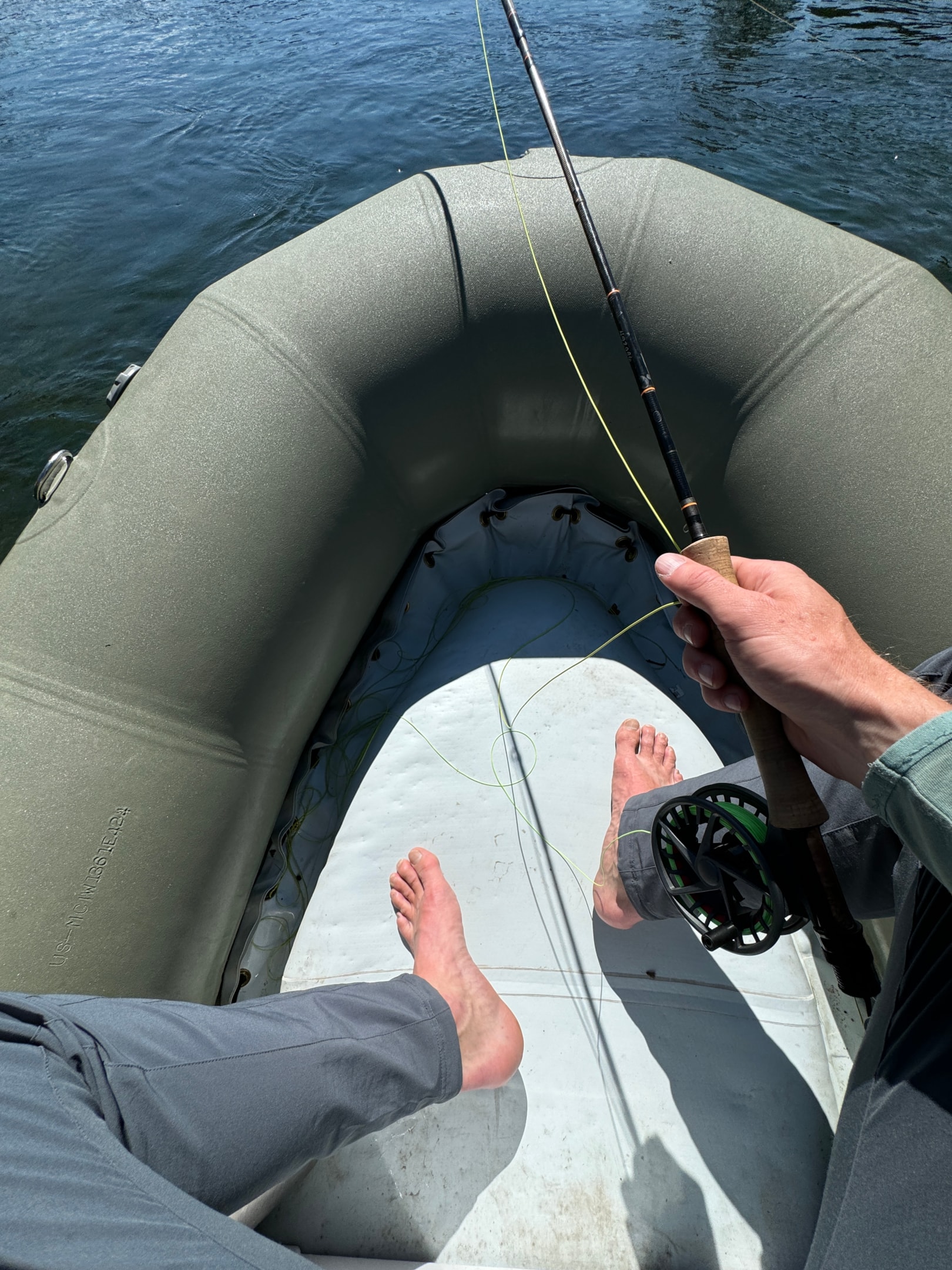
As water finds its way into the boat, it flows to the perimeter of the floor where the
holes—or drain holes—are located. Gravity and motion then help push the water out through these holes.
In contrast, traditional bucket boats need to be bailed manually, as they would accumulate water that has to be removed by hand because their floor is sealed. The self-bailing system eliminates this labor, providing a drier and more comfortable experience on the water and frankly just one less thing to have to worry about or deal with when you're on the water.
Self-Bailing Rafts vs. Bucket Boats: Pros and Cons
Like all designs, there both advantages and trade-offs and when deciding between these two types. It’s important to weigh how both self-bailing rafts and a traditional bucket boats performs under real-world river conditions—especially when your main goal is fishing. Both styles have their strengths, but their differences become more noticeable the more time you spend on the water.
Self-Bailing Inflatable Boats
Pros:
-
Automatic drainage: As water enters, it immediately flows out through drain holes in the self-bailing floor, so you don’t need to manually bail.
-
Drier gear and feet: While some water passes through, it doesn't sit—keeping your feet, tackle, and gear off a soggy floor.
-
Better for whitewater: Essential for rapids, rocks, and technical rivers where splashy water happens frequently.
-
Stable casting platform: The inflated floor creates a rigid, elevated surface to stand, move, and cast from.
-
Handles weight well: Designed to carry passengers, coolers, and fishing gear while still performing in low water.
-
Faster recovery if swamped: If you take on water near a log or stuck spot, it drains without stopping your float.
Cons:
-
Wet feet: Even though water drains, you’ll still get wet feet—there’s always a bit of water passing through.
-
Slightly more expensive: A self bailer generally costs a bit more due to the extra engineering in the floor design.
-
Not always ideal for lakes flat lakes where the water may drain slower and stick around briefly.
While a bucket boat might leave you sitting in a puddle until you can bail it out, a self-bailer lets you keep going without stopping to scoop water. But it does mean embracing wet feet as part of the experience. Which if it's somewhat cold out you're going to be in waders and when it's warm outside you'll typically appreciate the cool water on the feet.
Bucket Boats: Old-School Non-Bailing Rafts
Pros:
-
Dry interior (initially): If no water enters, your feet and floor stay dry—ideal for cold water days.
-
Lower cost: Often more affordable as there is less "engineering" and a simplified manufacturing process.
Cons:
-
Manual bailing required: Once water enters, you have to bail it out with a scoop or sponge—over and over again. Additionally, bucket boats can require a ton of manual effort to bail out water.
-
Unstable when swamped: Standing in pooled water makes it harder to cast, sit, or move safely.
-
Not suited for bigger rapids: If you hit a rapid or get stuck mid-trip, your raft can fill up and become extra weight to push or row.
-
Harder to clean/dry: Water can sit inside for hours after your float, especially in colder months.
-
More maintenance: Because water can't flow in and out of the boat it can sit for indefinite periods of time between floors which can result in mold and other gunk build up that can impact the lifespan of the boat.
The Verdict for Fly Fishermen

While bucket boats might still have a place in some casual or calm water floats, their
drawbacks quickly surface in fishing environments that demand versatility, safety, and stability. For anglers looking to spend more time focusing on their line, casting, and
reading water—and less time worrying about wet feet, excess weight, or pulling over to bail—there’s one option that clearly stands out.
That brings us to the real question: Why are self-bailing boats the best rafts for fly fishermen?
Let’s break that down next.
Why Self-Bailing Boats Are the Best Inflatable Raft Option for Fly Fishermen
When it comes to choosing the right raft for fly fishing, self-bailing boats are simply the best option—and it’s not even close. Whether you're floating a technical river, sneaking into a shallow side channel, or anchoring up on a gravel bar to cast dries, a self-bailing raft offers unmatched versatility, safety, and comfort.
The defining feature of a self-bailing raft is its self-bailing floor—an inflated floor suspended above the bottom of the boat with a series of drain holes or ports around the edges. As water enters the boat (from rapids, splashes, or wet wading boots), it immediately flows through these holes and drains out, preventing pooling. Unlike bucket boats or non-bailing rafts, you don’t have to bail out the water manually using a scoop or sponge. This means your feet stay drier, your gear stays above standing water, and you spend more time fishing and less time managing the boat.
Why does this matter so much for fly fishermen? For starters, self-bailing rafts keep your deck clear and stable. A wet floor in a bucket raft not only soaks your gear—it creates a slippery surface that can make it harder to stand and cast with precision. With a self bailer, water drains out quickly and efficiently, even while you're still rowing or casting. This helps you stay nimble when targeting rising fish or pushing through pocket water in search of a better run.
Fly fishing often means working from a loaded boat. Between passengers, coolers, dry bags, boat boxes, and rods, there's a lot of weight in the raft. Self-bailing models are built to carry that weight while still performing well in low water and technical float conditions. They tend to be lighter overall than boats with internal bladders or thick standard floors, making them easier to pull over rocks or portage when needed.
Self-bailers are also the best choice when navigating whitewater, which many rafters and fly anglers encounter on on most trout waters in the Rocky Mountain West. Whether you’re floating a low water riffle or sneaking through a Class IV rapid, a self-bailing boat gives you confidence that excess water won’t become a problem in the middle of a run. You don’t want to be stuck trying to bail out a bucket in the middle of a boulder garden—especially with cold spring runoff soaking the floor and threatening your dry layers.
Finally, for those who fish with family or a friend, self-bailing rafts provide peace of mind. They’re tough, reliable, and easy to clean and maintain. Even if you pick up a used raft, if it’s self-bailing and in good condition, it’s still a great choice. Compared to a bucket raft, it’s just a better all-around tool for the job.
If you want to float, stand, fish, and enjoy the river without a ton of extra maintenance or discomfort, the choice is clear: a self-bailing raft is the fly angler’s best friend.
Which One Should You Choose?
Deciding between a self bailing raft and a bucket boat depends on your priorities.
If you’re heading into whitewater, plan to pull over less often, and want safety and efficiency, a self-bailer is the clear choice. It lets you focus on rowing and keeping your line with various strokes on the oars while your partner fishes. Additionally, buying a self-bailing raft offers the advantage of better performance and safety in challenging conditions.
On the other hand, if you’re taking a short trip on calm rivers and really care about staying dry a bucket raft might do just fine—especially if you’re watching cost.
Fishing-focused rafts now tend to favor self bailing floors for safety and flexibility. If you plan to stand, sit, or move around to cast and land fish, a well-designed self bailing raft gives you more confidence—even when rocks, logs, or a sudden swell try to throw you off. Self-bailing rafts draw very little water, making them ideal for navigating shallow areas and getting your into those lower pressure fishing areas other larger, heavier drift boats and whitewater rafts just can' navigate through.
Conclusion: Wet Feet, Dry Boat, Better Experience

A self bailing raft is your river companion that takes care of itself, letting you spend more time enjoying the river, landing fish, or laughing with a friend instead of scooping out water. Yes, you might have wet feet, but your raft stays light, safe, and ready for whatever the day brings. Self-bailing rafts efficiently handle water that splashes into the boat, ensuring a more comfortable and maneuverable experience.
Whether you’re tackling class IV rapids, floating with the family, or organizing a weekend fishing trip, understanding the difference between self bailing rafts and bucket boats can help you make a more informed decision on what’s best for your adventures. In the world of inflatable rafts for fly fishing a self-bailing boat is the best decision over a bucket boat.
If you're starting your search for a fly fishing boat feel free to shoot us a message and we'll give you a buzz and chat through what you're looking for and what would make the most sense for you!
